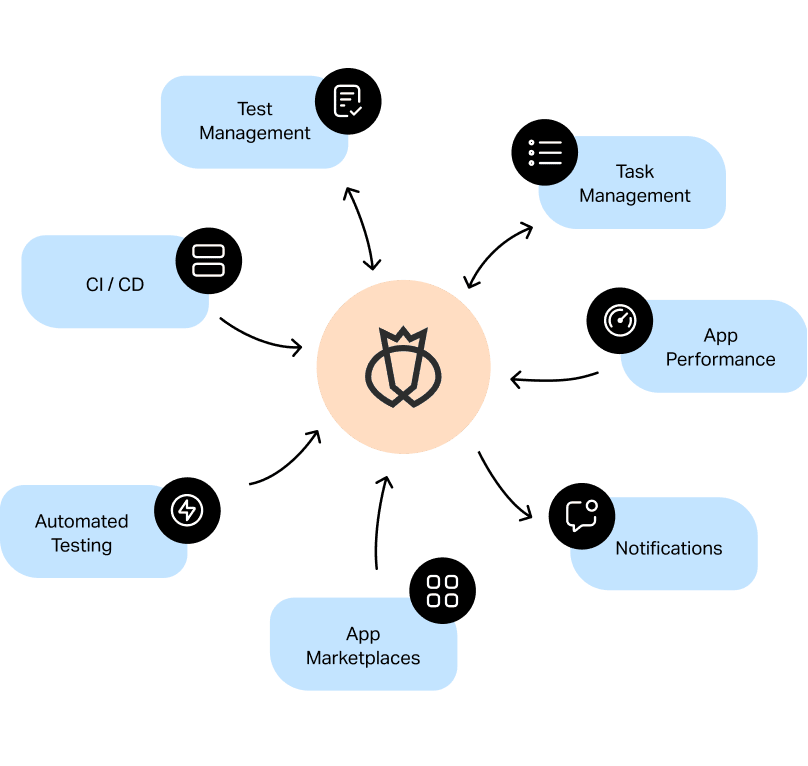From Manual to Automated Testing: A Comprehensive Guide to Transitioning Efficiently and Successfully
In the world of software program testing, the change from manual to automated procedures has ended up being an increasingly essential shift for companies seeking to boost effectiveness and precision in their testing techniques. The trip from manual to automated testing is not without its challenges, but when come close to strategically and with a clear plan in mind, the advantages can be substantial.
Advantages of Automated Evaluating
Automated testing provides many benefits, boosting performance and precision in software development processes. Automated examinations can be run simultaneously on multiple gadgets and running systems, considerably speeding up the testing stage contrasted to hands-on screening.
Additionally, automated testing ensures a greater degree of precision in finding flaws. Consistency in screening is likewise improved, as automated examinations carry out the same actions exactly each time they are run.
Choosing the Right Tools

To start with, analyze your needs and purposes. Understand the scope of your task, the modern technologies entailed, and the ability collection of your team. This analysis will help you determine the attributes and capacities you need in your testing devices.
Second of all, think about the compatibility of the tools with your existing procedures and systems. Seamless integration with your current software growth lifecycle is important to make sure a smooth shift to automation.
Additionally, review the scalability and versatility of the tools. As your screening requires develop, the devices should have the ability to adapt and accommodate modifications efficiently.
Lastly, consider the support and area around the tools. When executing automated screening, robust assistance and an active individual community can give important sources and support. By meticulously considering these facets, you can select the right devices that align with your demands and established the stage for an effective shift to automated screening.
Creating Effective Test Manuscripts

When crafting test scripts, it is essential to think about the particular needs of the software application being tested and make sure that the scripts attend to all vital functionalities. Clear and detailed calling conventions for test manuscripts and test situations can boost readability and maintainability. Furthermore, incorporating error handling devices within the test scripts can aid in identifying and attending to issues immediately.
Additionally, arranging test scripts right into modular elements can improve reusability and scalability, decreasing redundancy and enhancing performance in examination manuscript maintenance. Regular testimonials and updates to check manuscripts are crucial to maintain rate with developing software application needs and functionalities. By following these principles, testers can produce durable and reliable test scripts that contribute substantially to the success of automated screening procedures.
Integrating Automation Into Workflows
Reliable integration of automation tools into existing workflows improves processes and improves performance within software program growth cycles. When including automation right into operations, it is critical to recognize recurring jobs that can be automated to conserve time and minimize human error. By seamlessly incorporating automated testing tools like Selenium or Appium right into the software growth lifecycle, groups can attain faster responses on code adjustments, bring about quicker pest detection and resolution. This assimilation permits for continual screening throughout the advancement process, ensuring that any kind of concerns are determined at an early stage, causing greater software application quality. In addition, automation can be made use of to set off tests instantly after each code dedicate, offering immediate recognition and liberating testers to concentrate on even more complicated scenarios. Correct combination of automation tools calls for partnership between growth, testing, and procedures teams to develop a unified process that optimizes performance and efficiency in supplying high-grade software program products.
Ensuring a Smooth Transition
Efficiently transitioning to automated testing involves careful preparation and mindful execution to reduce disturbances and take full advantage of efficiency in the software advancement process - automation testing. To make sure a smooth shift, it is necessary to start by conducting a complete analysis of the existing screening procedures and recognizing locations where automation can bring one of the most significant benefits. Engaging with all stakeholders at an early stage in the process, including developers, testers, and project managers, is essential for gathering support and buy-in for the automation initiative
Communication is essential during this transition phase. Clear communication of the goals, benefits, and assumptions of automated screening aids to handle any type of resistance or worries that may occur. Additionally, providing view it adequate training and sources for employee to upskill in automation devices and methods is important for guaranteeing a successful change.

Final Thought
To conclude, transitioning from guidebook to automated screening offers various benefits, including enhanced effectiveness and dependability. By choosing the proper devices, composing efficient test scripts, and integrating automation perfectly into workflows, organizations can make sure a successful and smooth shift. It is important to accept automation as an important possession in software application testing processes to boost total top quality and efficiency.
In the realm of software application testing, the change from guidebook to automated procedures has become an increasingly vital change for companies seeking to enhance performance and precision in their testing practices. Automated examinations can be run concurrently on multiple gadgets and operating systems, substantially speeding up the testing stage compared to manual screening. Uniformity look what i found in screening is likewise boosted, as automated tests perform the exact same steps precisely each time they are run.To make sure the effective implementation of chosen screening devices, the production of reliable test scripts plays an essential role in confirming the capability and performance of automated processes - automation testing. By complying with these principles, testers can develop durable and effective examination scripts that add considerably to the success of automated screening processes